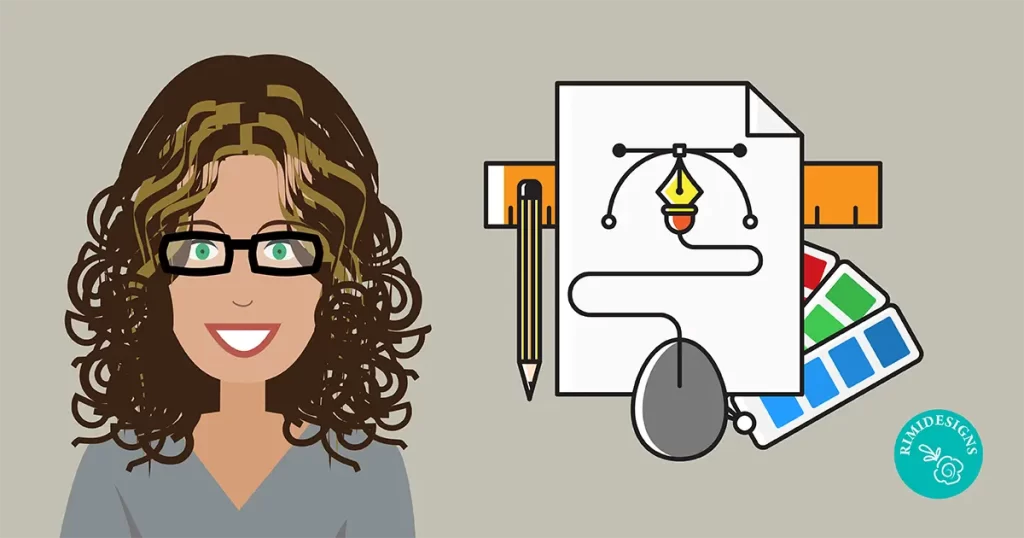
The 6 Key Principles of Logo Design
The goal of a logo is to perfectly represent your brand to an audience, while also differentiating you from others out there. When someone looks at your logo they should be able to determine two things: if they desire the product and if they want to buy it from your company. The principles of logo design will help you do that.
Learning how to design a logo can seem overwhelming. Where do you begin? That’s where the logo rules below come in handy.
Logo design is a process that gets easier when you approach it with knowledge, experience and a solid plan. If you want to create something great it’s important to know the principles of graphic design and learn some graphic design basics. Then determine who your customer is and what it is that you want to tell them. Your logo design choices will make a big difference in helping you communicate your message to your customer.
These 6 logo design principles are the rules you need to follow if you want to create an effective and successful logo.
1. Simplicity
Simplicity is what helps a logo stand up against challenges of time and what makes it replicable and easy to work with. You want your logo to be as clear and visible as possible while reflecting your aesthetics and conveying your philosophy.
Wise choices in typeface, colour options and graphics are crucial to this step. Is your logo made up of several overlapping shadings, images, fonts, letters? Choose just a few active elements for your design — a good logo is not overcrowded with elements.
And don’t forget the white space! Simplicity requires excellent use of spacing. The elements that make up your logo need to breathe so that your logo stands out and speaks clearly to your audience.
2. Originality
Your logo needs to be different enough to attract attention and memorable enough to remain in people’s minds. Successful logos stand out from the crowd by being different, original and memorable. Your logo must attract a first glance that people will remember and then express trust and reliability upon repeat interactions.
A unique logo design calls for a unique design concept. This is the point in logo design where artistry meets great ideas and a firm grasp of consumer design. A skilled graphic designer can respond to your logo goals, with all these considerations in mind and create something truly original.
3. Versatility
Your logo has a big job. It will adorn all of your products, shop signage, digital ads and much more. So, your logo needs to be versatile and adaptable to land anywhere. Think of all the places you’ll want to use your logo and make sure it looks good in every single one of them.
Having a simple, easily recognisable logo can help with versatility. Another great way to achieve versatility is with a responsive logo. Responsive logos are adaptive and have different variations of size, complexity or even colour to accommodate and adapt to wherever they are placed.
The rule of thumb is that your logo should also be able to work with any colour or background. That means it needs to look good in black and white with no effects. This is your logo’s most bare bones form. Is it still unique and memorable? Does it still carry your company’s voice?
4. Scalability
Similarly, your logo should be able to adapt to any size. Can it go on a giant billboard and a tiny pen? Going back to the adaptability principle, we know that your logo ought to be scalable to represent your brand anywhere.
A scalable logo needs to make sense, look good and remain legible at any size — whether it is printed on a tiny business card or on a huge poster. If you include too much detail in your logo, it will make it harder to scale down to a small size.
To achieve scalability in your logo, the designer will create your logo in vector format. Vector files are created with rescaling in mind, so your logo looks just as sharp when it’s blown up to a large size.
5. Balance and proportion
Humans recognise balanced designs as beautiful. A well-proportioned design will strike a balance between the various elements that make up your logo. Proportion refers to the weight of each of the elements that make up your logo. From a practical perspective, the right proportions will make your logo whole and help it to make sense.
Symmetrical logos are balanced through equally weighted elements aligned on either side of a centre line. On the other hand, asymmetrical logos can be balanced too, using opposite weights to create a composition that is not even, but still has equilibrium.
6. Timelessness
A timeless logo looks just as good in ten year as it looks today. Avoid giving in to short-lived fads when designing your logo and go for a classic look. Psychedelic 70s-inspired logos might be all the rage for your industry today, but they might be played out in a year.
Epic logos stand the test of time because they pay attention to logo principles and rules that last, rather than what everyone else is doing right now. As your company grows and changes, a logo that holds your fundamental goals and ideals will remain current. Something that may seem quirky or timely in the current cultural sphere might help your brand gain attention at the moment but it might lose that meaning in the future. Something that speaks to you and speaks for you will stay by your side for the duration.
SOURCE: VistaPrint
A good logo should reflect the spirit of your brand. Need a professional looking logo for your business?

![[VIDEO] 11 Steps to a Perfect Logo Rimidesigns Perfect Logo](https://www.rimidesigns.com.au/WPsite/wp-content/uploads/2023/04/Rimidesigns-Perfect-Logo-270x270.webp)

